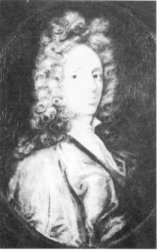Francis Bindon facts for kids
Quick facts for kids
Francis Bindon
|
|
|---|---|
 |
|
| Born | 1690 |
| Died | 1765 |
| Nationality | Irish |
| Occupation | Architect |
| Buildings | Woodstock Estate Russborough House Bessborough House |
Meet Francis Bindon (around 1690 – 1765), a super talented architect and painter from Ireland! He lived a long time ago, in the 1700s. People back then really admired his work. He was asked to design amazing buildings and paint portraits for important people. Even though he created so much, we don't know a lot about his personal life today. But his art and buildings are still here for us to enjoy!
Contents
Amazing Art and Buildings
Francis Bindon spent most of his life in Dublin, Ireland. He became very well-known for painting portraits, which are pictures of people.
Famous Paintings
One of his most famous paintings is a portrait of Turlough Carolan. Carolan was a famous blind harpist, a musician who played the harp. This painting is special because it's the only known picture of Carolan that still exists! You can see it today at the National Gallery of Ireland.
Bindon also painted many other important people. These included famous church leaders like Archbishop Hugh Boulter and Archbishop Charles Cobbe. He also painted Thomas Sheridan, a well-known actor, and several portraits of the famous writer Jonathan Swift.
Designing Grand Houses
Besides painting, Bindon was also a fantastic architect. He designed many large country houses, often in a style called Palladian. This style uses ideas from ancient Roman and Greek buildings.
Some of the beautiful houses he designed include:
- Woodstock Estate in County Kilkenny
- Drewstown in County Meath
- Newhall in County Clare
He also helped design Johns Square in Limerick and the Market House in Mountrath. Bindon even worked with another famous architect, Richard Cassels, on Russborough House in County Wicklow. Bindon finished Russborough House after Cassels passed away in 1751. Many people think Russborough is one of the most beautiful houses in all of Ireland!
A Talented Artist
Deane Swift, who was a cousin of the writer Jonathan Swift, once said that Bindon was "the greatest painter and architect of his time." While Deane Swift was a close friend and might have been a bit biased, Bindon's elegant art and buildings truly speak for themselves. Many of his portraits are displayed in the National Gallery. His grand houses are still standing across the Irish countryside.
Bindon's Life Story
We don't know a lot of personal details about Francis Bindon. The best information we have comes from research done in 1967.
Early Life and Family
Francis Bindon was born around 1690 in a place called Clooney, in County Clare, Ireland. He never married and passed away in 1765. He came from a wealthy family who owned a lot of land. This allowed him to explore his interests in art and architecture.
His family was quite important. His father, David Bindon, was a Member of Parliament (MP) for Ennis. This meant he was a representative in the government. His mother's family also had a lot of influence in the Ennis area.
Francis had four brothers and three sisters. His brothers Henry and Thomas went to Trinity College Dublin, a famous university. Henry became a lawyer, and Thomas became a church leader in Limerick. Two of his brothers, David and Samuel, also became Members of Parliament for Ennis. Francis himself would later hold this same position!
Education and Travel
When he was in his twenties, Bindon went on a "Grand Tour" of Europe. This was a popular trip for young, wealthy people to learn about art and culture. He studied art and architecture at Padua University in Italy in 1716. He also studied at Godfrey Kneller's Academy in London, a famous art school.
Later Life and Legacy
Even though he owned land in Clare and Limerick, Francis Bindon lived most of his life in Dublin. His father gave him the family estate at Clooney in 1723, and he kept it for the rest of his life.
Francis Bindon died on June 2, 1765. He left his house in Dublin and many of his belongings to his good friend, Francis Ryan. An old newspaper, Faulkner's Journal, wrote that he was "one of the best painters and architects this nation has ever produced."
The old Clooney House was changed a lot in the mid-1800s. Today, it's mostly a large ruin, empty since the 1920s. The land around it is now a private farm. You can still see the ruins of old gatehouses, a medieval tower, and other buildings there.

